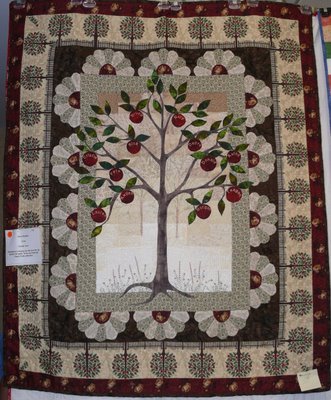For the 21st century reader, it may not be initially
apparent but each chapter of “Alias Grace” is titled after a different
quilting pattern. Since I have no sewing abilities, I did not
understand Atwood’s use of this technique at first. All of the patterns
related to the content in the individual chapters, but also served the
greater purpose of giving more meaning as a whole. The last chapter in
the novel is called “The Tree of Paradise”, which I found very
interesting.
In this chapter, we learn of Grace’s fate. After Dr. Jordan
disappeared, the truth behind the murders of Nancy and Mr. Kinnear was
never revealed. Grace served her time and was later released from the
penitentiary, where her former co-worker Jamie Walsh awaited to take her
hand in marriage. Jordan lives out his life with his mother still
doting over his affairs, covering up his mistakes with claims of
amnesia. All in all, there is very little catharsis and very little
closure for the audience.
However, I did find Grace’s quilt as metaphor for her life. She
incorporates different artifacts from her past and connects together the
disjointed pieces of her memory with stitches rather than the truth,
which she could never fully grasp. I also feel liked the quilt
represented the freedom that Grace could never come to gain early in
life. “The Tree of Paradise” is not the Tree of Knowledge from the
biblical tale, whose fruit condemned the first man and woman. Rather,
it is the Tree of Knowledge without the terrible truth. It is as if Eve
never took the apple and the Garden of Eden remained pristine. I think
that Grace made the quilt to symbolize her own desire to have remained
pure of heart and to have lived an idealized life. Although she cannot
go into the past, she can connect together her pain and have it
symbolize a new future.

is there a pattern for this quilt
ReplyDelete